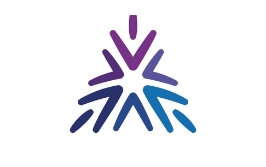دراسة جدوى: دليلك الشامل لبدء مشروع ناجح في السعودية
نماذج جاهزة مجانية - دراسات جدوى اقتصادية - مشاريع صغيرة وتجارية
هل تبحث عن نموذج دراسة جدوى جاهز مجانا؟ في هذا الدليل الشامل، نوفر لك كل ما تحتاجه لإعداد دراسة جدوى ناجحة لمشروعك في السعودية، مع نماذج جاهزة للتحميل بصيغة PDF وWord.
ما هي دراسة الجدوى ولماذا هي مهمة لمشروعك؟
تعتبر دراسة جدوى حجر الأساس لأي مشروع ناجح في المملكة العربية السعودية. سواء كنت تخطط لـ مشروع صغير أو مشروع تجاري ضخم، فإن دراسة الجدوى هي الخريطة التي تحمي استثمارك من المخاطر وتزيد من فرص نجاحك.
دراسة الجدوى هي تحليل شامل يسبق تنفيذ المشروع ويشمل ثلاثة جوانب رئيسية: السوقية، الفنية، والمالية. تهدف إلى تحديد مدى قابلية المشروع للنجاح من الناحية الاقتصادية والفنية والقانونية.
مكونات دراسة الجدوى الناجحة
1. الدراسة السوقية
تحليل دقيق للسوق المستهدف في السعودية، يشمل حجم السوق، المنافسين، العملاء المحتملين، والاتجاهات السوقية. دراسة السوق تساعدك على تحديد فرصك ومخاطرك بدقة.
2. الدراسة الفنية
تتناول الجوانب التنفيذية للمشروع: الموقع، المعدات، التقنيات، القوى العاملة، والمواد الخام. في السعودية، يجب الانتباه لمتطلبات التراخيص والمواصفات الفنية المحلية.
3. الدراسة المالية (الاقتصادية)
هي جوهر دراسة جدوى اقتصادية وتشمل تقدير التكاليف الاستثمارية والتشغيلية، توقعات الإيرادات، نقطة التعادل، والعائد المتوقع على الاستثمار. هذه الدراسة تحدد مدى ربحية المشروع.
تحميل نماذج دراسة جدوى جاهزة
نماذج جاهزة للتحميل المجاني
دراسة جدوى مشروع صغير: مثال تطبيقي
مشروع مقهى صغير في الرياض
يعد مشروع المقهى الصغير من المشاريع الواعدة في المدن السعودية الكبرى مثل الرياض وجدة. الدراسة تشمل تحليل الموقع المناسب، دراسة المنافسين، تقدير التكاليف، وتوقعات الإيرادات. النجاح في هذا المشروع يعتمد على التميز في الخدمة وجودة المنتج.
أخطاء شائعة في إعداد دراسة الجدوى الاقتصادية
تجنب هذه الأخطاء لضمان دقة دراستك:
- التقليل من تقدير التكاليف التشغيلية
- المبالغة في توقعات الإيرادات
- إهمال دراسة المنافسين بشكل كافٍ
- عدم مراعاة العوامل الموسمية في السوق السعودي
- تجاهل متطلبات التراخيص واللوائح المحلية
كيف تضمن نجاح مشروعك التجاري في السعودية؟
لضمان نجاح مشروع تجاري في السوق السعودي:
- استخدم نموذج دراسة جدوى جاهز مجانا كأساس لدراستك
- قم بتخصيص النموذج حسب ظروف مشروعك والمدينة المستهدفة
- استشر خبراء محليين في مجال مشروعك
- استفد من بيانات الهيئة العامة للإحصاء السعودية
- اختر موقعاً استراتيجياً يتناسب مع نشاطك التجاري
- تابع التغيرات في اللوائح والأنظمة السعودية
الأسئلة الشائعة عن دراسات الجدوى
الدراسة المبدئية هي تقييم سريع لجدوى الفكرة، بينما الدراسة التفصيلية هي تحليل شامل لكل جوانب المشروع وتكون أكثر دقة وتفصيلاً.
النموذج الأساسي متشابه، لكن المشاريع التجارية الكبيرة تتطلب تحليلاً أعمق وبيانات أكثر تفصيلاً، خاصة في الجوانب المالية والقانونية.
تختلف التكلفة حسب حجم المشروع وتعقيده، وتتراوح عادة بين 5,000 ريال للمشاريع الصغيرة و50,000 ريال للمشاريع الكبيرة.
بغض النظر عن حجم مشروعك - صغيراً كان أو تجارياً كبيراً - فإن دراسة الجدوى الدقيقة هي أول خطوة نحو النجاح في السوق السعودي. استخدم النماذج المجانية المتاحة وخذ وقتك في إعداد دراسة شاملة لتضمن قرار استثماري سليم.

اطلب الدراسة الآن

تركز شركة جدوى المستقبل الإدارية على تقديم خدمات استشارية متخصصة للأفراد والشركات الذين يسعون لتحليل الجوانب المالية والتجارية لمشاريعهم المستقبلية.


